5-9. As from this time of the year (i.e. Beltaine) the light from the Sun
was gradually
pushing the nighttime
star observations into the background (when seen north of the equator) we
had better here document what stars should have been close to the
Full Moon according to the nakshatra system used backwards:
|
April 11 (101, 466) |
12 |
13 → 14 * 29½ |
|
...
According to the reform, the 5-day 'Opening
of the Year' ceremonies would
include an additional 6th day every
fourth year. The reason given was that
the rise of Sothis advances to
another day in every 4 years, so
that attaching the beginning of the year
to the heliacal rising of the star
Sirius would keep the calendar
synchronized with the seasons ... |
 |
 |
 |
|
Ea5-13 → 19 * 27 |
Ea5-14 (150) |
Ea5-15 |
|
te mauga |
te hau tea |
te manu |
|
Maúga. 1. Last;
aga maúga o te Ariki o Hotu Matu'a,
King Hotu Matua's last work. 2. Hill,
mountain. Mouga, moúga. Last;
vânaga moúga o te Ariki O Hotu Matu'a,
the last words of King Hotu Matu'a.
Vanaga. Mauga kore, impalpable.
Mouga. 1. Enough, that's all, at
last. 2. Mountain, ridge of hills;
mouga iti, hillock; tua mouga,
mountain top; hiriga mouga;
hillside, declivity, slope. P Pau.:
mahuga, mountain. Mgv.: mou,
maga, mountain. Mq.: mouna,
mouka, peak or crest of a
mountain. Ta.: maua, moua,
mountain. 3. Extinction, end,
interruption, solution; te mouga o te
hiriga, end of a voyage; pagaha
mouga kore, without consolation. 4.
To get. Churchill |
|
INVISIBLY CLOSE TO THE SUN: |
|
δ Phoenicis (21.5) |
υ Andromedae (22.9) |
ACHERNAR (End of
the River) =
α
Eridani
(23.3),
χ
Andromedae (23.6),
τ
Andromedae (23.9) |
 |
|
REVERSED NAKSHATRA → CLOSE TO THE FULL MOON: |
|
Oct 10 |
11
(284 = 467 - 183) |
12 (103
+ 182 = 285) |
|
71 VIRGINIS
(203.6) |
No star listed (204) |
HEZE =
ζ
Virginis
(205.0),
SOUTHERN PINWHEEL GALAXY = M83 Hydrae
(205.7) |
 |

... Mons Maenalus, at the feet of Boötes,
was formed by Hevelius, and published in his
Firmamentum Sobiescianum; this title
coinciding with those of neighboring stellar
groups bearing Arcadian names. It is sometimes,
although incorrectly, given as Mons Menelaus,
- perhaps, as Smyth suggested, after the
Alexandrian astronomer referred to by Ptolemy
and Plutarch. The Germans know it as the Berg
Menalus; and the Italians as Menalo.
Landseer has a striking representation of the
Husbandsman, as he styles Boötes, with sickle
and staff, standing on this constellation
figure. A possible explanation of its origin may
be found in what Hewitt writes in his Essays
on the Ruling Races of Prehistoric Times:
The Sun-god thence climbed up the
mother-mountain of the Kushika race as the
constellation Hercules, who is depicted in the
old traditional pictorial astronomy as climbing
painfully up the hill to reach the constellation
of the Tortoise, now called Lyra, and thus
attain the polar star Vega, which was the polar
star from 10000 to 8000 B.C. May not this modern
companion constellation, Mons Maenalus, be from
a recollection of this early Hindu conception of
our Hercules transferred to the adjacent Bootes?

Bharani was, we know,
also denominated as
41 Tauri
which ought to allude to its right ascension position *41.4, and
therefore we ought to be able to determine the
reason for 71 Virginis in a similar
fashion.
Possibly it
alluded to 471 - 400. Or deeper: 26000 / 366 =
71.
Anyhow,
Mons Maenalus was a Mountain (mauga):
|
 |
*38 |
 |
*24 |
 |
|
Ea3-22 (87) |
Ea4-25 (125) |
Ea5-13 (149) |
|
Febr 8
(39, 404) |
March 18
(77, 442) |
April 11 (101, 466) |
|
*324 |
*362 |
*386 |
... Odysseus and his fleet were now
in a mythic realm of difficult trials and passages, of
which the first was to be the Land of the Cyclopes,
'neither nigh at hand, nor yet afar off', where the
one-eyed giant Polyphemus, son of the god Poseidon (who,
as we know, was the lord of tides and of the Two Queens,
and the lord, furthermore, of Medusa), dwelt with his
flocks in a cave. 'Yes, for he was a monstrous thing and
fashioned marvelously, nor was he like to any man that
lives by bread, but like a wooded peak of the towering
hills, which stands out apart and alone from others.'
Odysseus, choosing twelve men,
the best of the company, left his
ships at shore and sallied to the vast cave. It was
found stocked abundantly with cheeses, flocks of lambs
and kids penned apart, milk pails, bowls of whey; and
when the company had entered and was sitting to wait,
expecting hospitality, the owner came in,
shepherding his
flocks ...
|
→ 41.4 Tauri (Bharani)
|
4-15 → 4 * 15 = 60 |
April 16 (471 → 1½ * 314) |
 |
 |
 |
|
Ea5-16 (152) → 5 * 16 = 80 |
Ea5-17 → 9 * 17
= 516 + 401 |
Ea5-18 |
|
tui ika |
te hau tea |
|
Tui. 1. To sew mats, to make strings.
E-tahi tuitui reipá i Te Pei, ekó rava'a
e-varu kaukau; i-garo ai i Hiva, i te
kaiga, a necklace of mother-of-pearl is on
te Pei, few will find it (lit: eight
groups of people); it has remained in Hiva,
in our homeland. 2. The three stars of Orion's
Belt. Vanaga.

 |
|
ALSEIPH (Scimitar) =
φ
Persei
(24.5),
τ
Ceti (24.7) |
No star listed (25) |
ANA-NIA-10 (Pillar-to-fish
by)
χ Ceti (26.1),
POLARIS = α Ursae Minoris,
BATEN KAITOS (Belly of the Fish) = ζ Ceti
(26.6),
METALLAH = α Trianguli
(26.9) |
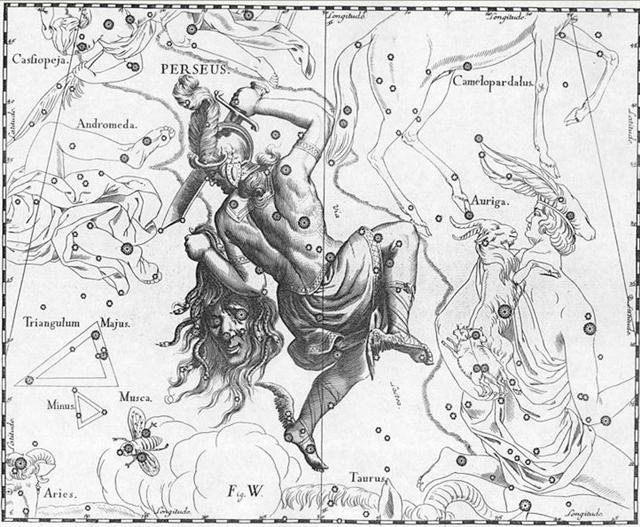 |
|
Oct 13 |
14 |
15 (288) |
|
ε Centauri (206.3),
κ Oct. (206.4)
*165.0 = *206.4 - *41.4 |
No star listed (207) |
τ
Bootis (208.2),
BENETNASH (Leader of the Daughters of the Bier)
=
η
Ursae Majoris
(208.5),
ν
Centauri (208.7),
μ
Centauri,
υ
Bootis (208.8) |
Possibly, once upon a time the star Hamal in
Aries had been picked out as a special case because Thuban
was half a year away:
|
April 17 (107) |
18 (156 - 48 = 108) |
19 |
20 |
21 |
 |
 |
 |
 |
 |
|
Ea5-19 |
Ea5-20
(108 + 48) |
Ea5-21
(157 → 314 / 2) |
Ea5-22 |
Ea5-23 |
|
te
henua |
kua
moe |
inoino |
koia ra kua
moe |
ki te
inoino |
|
Al Sharatain-1
/
Ashvini-1
/
Bond-16 (Dog)
/
Mahrū-sha-rishu-ku-1
(Front of the Head of Ku)
SEGIN =
ε
Cassiopeia, MESARTHIM =
γ
Arietis,
ψ
Phoenicis (27.2),
SHERATAN (Pair of Signs) =
β
Arietis,
φ
Phoenicis (27.4)
*351.0 = *27.4 - *41.4 |
ι Arietis (28.0), λ Arietis (28.2), υ Ceti
(28.8) |
ALRISHA (The Knot) = α
Piscium,
χ Phoenicis (29.2),
ε
Trianguli (29.4),
ALAMAK
(Caracal) = γ Andromedae
(29.7)
*353.0 = *29.4 - *41.4 |
Arku-sha-rishu-ku-2
(Back of the Head of Ku)
2h (*30.4 = *354.0 + *41.4)
κ
Arietis (30.3),
HAMAL (Sheep) =
α Arietis
(30.5)
ALKES (α
Crateris) |
DELTOTUM = β Trianguli
(31.2), ι Trianguli (31.7), η Arietis (31.9) |
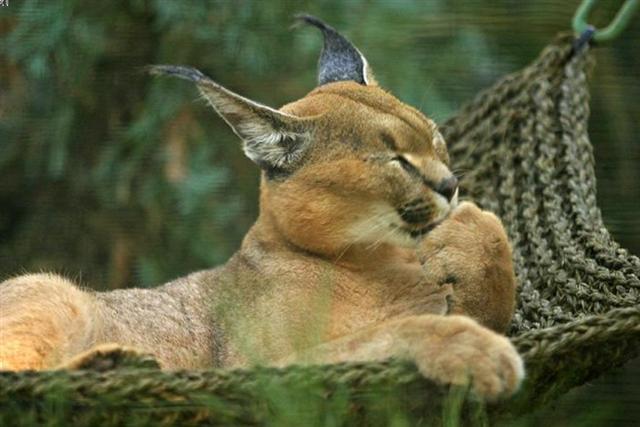 |
|
Oct 16 |
17 |
18 |
19 (292) |
20 |
|
No star listed (209) |
MUPHRID (Solitary Star) = η Bootis
(210.1), ζ Centauri (210.3) |
φ Centauri (211.0), υ¹ Centauri (211.1), υ² Centauri
(211.8), τ Virginis (211.9) |
AGENA (At the Knee) =
β
Centauri
(212.1),
θ
Apodis (212.5),
THUBAN (Dragon) =
α
Draconis
(212.8) |
14h (213.1)
π Hydrae, χ
Centauri (213.0),
MENKENT (Shoulder of the Centaur) =
θ
Centauri
(213.1) |
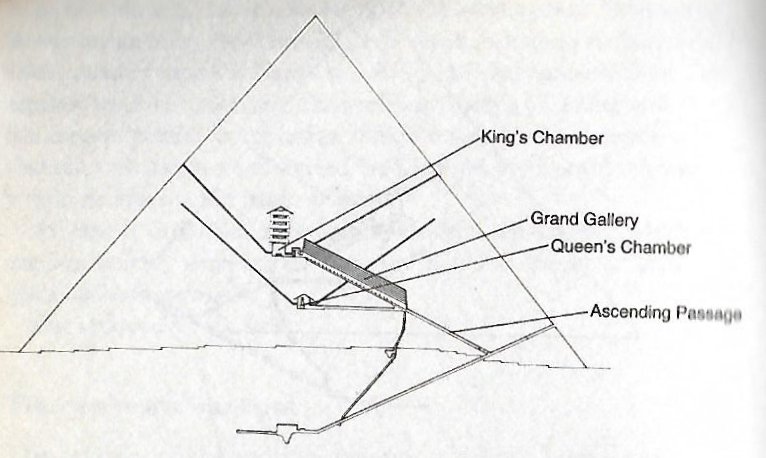 |
|
April 22 (*32) |
23 (478) |
24 |
 |
 |
 |
|
Ea5-24 |
Ea5-25 |
Ea5-26 |
|
tagata - te maitaki |
kua tupu ia |
ki te
maitaki |
|
Maitaki. Clean, neat, pure, pretty,
nice, beautiful, handsome; tagata rima maitaki,
clean-handed man, correct man. Vanaga. 1. Good. Henua
maitaki = the good earth. 2. Shine. Marama maitaki
= the shining moon. Barthel. Ce qui est bon. Jaussen
according to Barthel. Meitaki, good, agreeable,
efficacious, excellent, elegant, pious, valid, brilliant,
security, to please, to approve (maitaki); ariga
meitaki, handsome, of pleasant mien; mea meitaki ka
rava, to deserve; meitaki ke, marvelous, better.
Hakameitaki, to make good, to amend, to do good, to
bless, to establish. Meitakihaga, goodness. PS Pau.:
maitaki, good. Mgv.: meitetaki, beautiful,
good. Mq.: meitai, good, agreeable, fit, wise,
virtuous. Ta.: maitaiki, good, well. Niuē:
mitaki, good.
Maitakia, clean.
Churchill.
Tupu.
1. Shoot, sprout, bud; to sprout, to bud. 2. Pregnant:
vî'e tupu (o te poki); to be conceived (of fetus in
its mother's womb): he-tupu te poki i roto i te kopú o
toona matu'a. Vanaga. To grow, to sprout, to germinate,
to come forth, to conceive, pregnant, germ; mea tupu,
plant; tupu ke avai, of rapid growth; tupu
horahorau, precocious; hakatupu, to produce, to
stimulate growth, to excite. P Pau.: fakatupu, to
raise up, to create. Mgv.: tupu, to grow, to
conceive, to be pregnant. Mq.: tupu, to grow, to
sprout, to conceive. Ta.: tupu, to grow, to sprout.
Churchill. Mgv.: Tupu, the best or worst, used of men
or of bad qualities. Sa.: tupu, king. Ma.: tupu,
social position, dignity. Churchill. |
|
ξ¹ Ceti (32.1) |
γ,
δ
Trianguli (33.0),
χ
Persei (33.2),
10 Trianguli
(33.5),
θ
Arietis (33.3),
MIRA
(Astonishing) =
ο
Ceti
(33.7) |
No star listed (34) |
 |
|
Oct 21 |
22 (295 = 478 - 183) |
23 |
|
Neck-2 (Dragon)
ASELLUS TERTIUS (3rd Ass Colt) =
κ
Bootis,
κ
Virginis,
14 Bootis
(214.8) |
Al Ghafr-13 (The Cover)
/
Svāti-15 (Very Good)
/
TAHUA-TAATA-METUA-TE-TUPU-MAVAE-6
(a pillar to stand by)
15
Bootis
(215.2),
ARCTURUS = α
Bootis (215.4),
ASELLUS SECUNDUS (2nd Ass Colt) =
ι
Bootis
(215.5),
SYRMA (Train of the Virgin's Robe) =
ι
Virginis,
λ
Bootis (215.6),
η
Apodis (215.8)
*174.0 = *215.4 - *41.4 |
ι Lupi,
18 Bootis
(216.3),
KHAMBALIA
(Crooked-Clawed) = λ Virginis (216.4),
υ Virginis (216.5), ψ Centauri (216.6), ε Apodis (216.8)
*175.0 = *216.4 - *41.4
|
|
April
25 (115) |
26 |
27 |
28 (4 * 29½) |
|
29 |
30 (120) |
Beltaine |
 |
 |
 |
 |
 |
 |
 |
|
Ea5-27 |
Ea5-28
(164) |
Ea5-29 |
Ea5-30 |
→
18 * 29½ |
Ea5-32
(168) |
Ea5-33
|
|
tagata - te hokohuki |
tagata rima
oho |
henua |
kua tupu i te tupuga |
Te
mauga |
te
hokohuki - te
kiore |
huki - kiore |
|
... Beltane is
mentioned in some of the earliest Irish literature and it is
associated with important events in Irish mythology. It
marked the beginning of summer and was when cattle were
driven out to the summer pastures. Rituals were performed to
protect the cattle, crops and people, and to encourage
growth. Special bonfires were kindled, and their flames,
smoke and ashes were deemed to have protective powers. The
people and their cattle would walk around the bonfire, or
between two bonfires, and sometimes leap over flames or
embers. All household fires would be doused and then re-lit
from the Beltane bonfire. Doors, windows, byres and the
cattle themselves would be decorated with yellow May
flowers, perhaps because they evoked fire. In parts of
Ireland, people would make a May Bush; a thorn bush
decorated with flowers, ribbons and bright shells. Holy
wells were also visited, while Beltane dew was thought to
bring beauty and maintain youthfulness ...
... Since the early 20th
century it has been commonly accepted that Old Irish
Beltaine is derived from a Common Celtic
*belo-te(p)niâ, meaning 'bright fire'. The element
*belo- might be cognate with the English word bale
(as in bale-fire) meaning 'white' or 'shining'; compare Old
English bael, and Lithuanian/Latvian baltas/balts,
found in the name of the Baltic; in Slavic languages
byelo or beloye also means 'white', as in
Беларусь (White Russia or Belarus)
or Бе́лое мо́ре
(White Sea). A more recent etymology by Xavier Delamarre
would derive it from a Common Celtic *Beltinijā,
cognate with the name of the Lithuanian goddess of death
Giltinė, the root of both being Proto-Indo-European
*gelH- ('suffering, death') ...
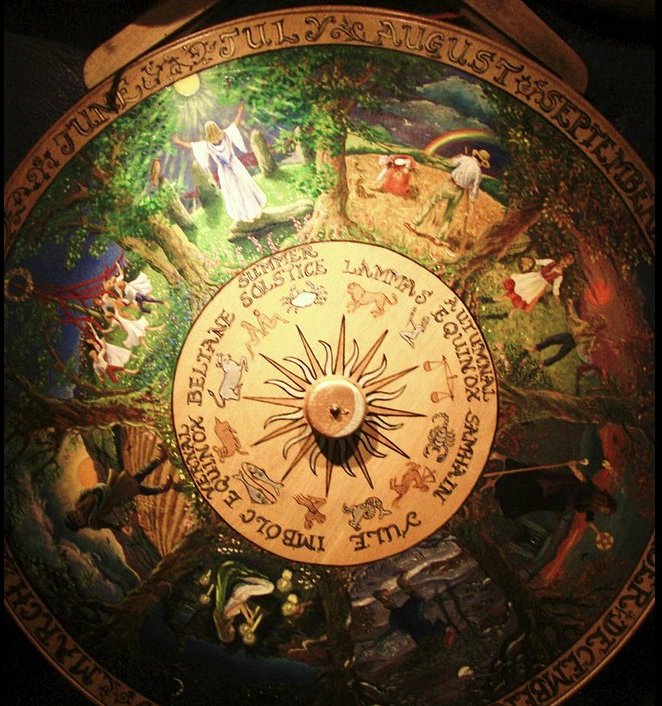 |
|
ξ Arietis (35.0),
ρ Ceti (35.4), 12 Trianguli
(35.8), ξ² Ceti (35.9)
*360.0 = *35.4 - *41.4 |
σ Ceti (36.9) |
ν Ceti (37.9) |
ν Arietis (38.5), δ, ε Ceti (38.8) |
|
μ
Arietis (39.4), HEAD OF THE FLY = 35 Arietis
(39.6),
KAFFALJIDHMA (Part of a Hand) =
γ
Ceti,
θ
Persei (39.8)
*363.0
= *39.4 - *41.4 |
π
Ceti,
ο
Arietis (40.0),
ANGETENAR (Bend in the River) =
τ¹
Eridani,
μ
Ceti (40.2),
RIGHT WING = 39 Arietis
(40.9) |
Bharani-2 (Yoni)
/
Stomach-17 (Pheasant)
π
Arietis (41.2),
MIRAM (Next to the Pleiades) =
η
Persei
(41.3),
BHARANI = 41 Arietis (41.4),
τ²
Eridani,
σ
Arietis (41.7) |
|
Oct 24 |
25 |
26 |
27 (300) |
28 |
29 |
30 |
|
ASELLUS PRIMUS (1st Ass Colt) =
θ
Bootis
(217.8) |
τ
Lupi,
δ
Oct. (218.1),
φ
Virginis (218.7)
FOMALHAUT (α Piscis Austrini) |
σ
Lupi (219.1),
ρ
Bootis (219.5),
HARIS (Keeper) =
γ
Bootis
(219.7) |
σ Bootis (220.2),
η Centauri (220.4)
*179.0 = *220.4 - *41.4 |
ρ Lupi (221.0),
TOLIMAN = α Centauri
(221.2), π Bootis (221.8), ζ Bootis (221.9) |
31 Bootis
(222.0),
YANG MUN (South Gate) =
α
Lupi
(222.1),
RIJL AL AWWA (Foot of the Barker) =
μ
Virginis
(222.5),
ο
Bootis (222.9) |
IZAR (Girdle) =
ε
Bootis
(223.0),
109 Virginis,
α
Apodis (no Feet)
(223.3),
μ
Librae (223.8) |
Metoro seems clearly to have indicated Ea5-31 was
corresponding to an End (Mauga).
Maúga. 1. Last; aga maúga o te Ariki o Hotu
Matu'a, King Hotu Matua's last work. 2. Hill,
mountain. Mouga, moúga. Last; vânaga moúga o
te Ariki O Hotu Matu'a, the last words of King Hotu
Matu'a. Vanaga. Mauga kore, impalpable. Mouga.
1. Enough, that's all, at last. 2. Mountain, ridge of
hills; mouga iti, hillock; tua mouga,
mountain top; hiriga mouga; hillside, declivity,
slope. P Pau.: mahuga, mountain. Mgv.: mou,
maga, mountain. Mq.: mouna, mouka,
peak or crest of a mountain. Ta.: maua, moua,
mountain. 3. Extinction, end, interruption, solution;
te mouga o te hiriga, end of a voyage; pagaha
mouga kore, without consolation. 4. To get.
Churchill.
He may have deduced this from the glyph type mauga,
or from the Full Moon at the right ascension line of
Toliman, or in some other way, e.g. from counting April
29 as day 118 + 1. Anciently they did no rely on a single
sign but on a bunch of them which would tell the truth.
October 22 (→ π) was at the Cover (for the Sun
according to the Arabs) respectively at a Very Good
place (for the Full Moon according to the Hindu). Here
10 lunar synodic months had been completed and 8 days
(nights) later was Beltaine. The Full Moon was at
the right ascension line at the Girdle in Bootes,
which indeed Hevelius has indicated (close to his
closely bent right
arm):
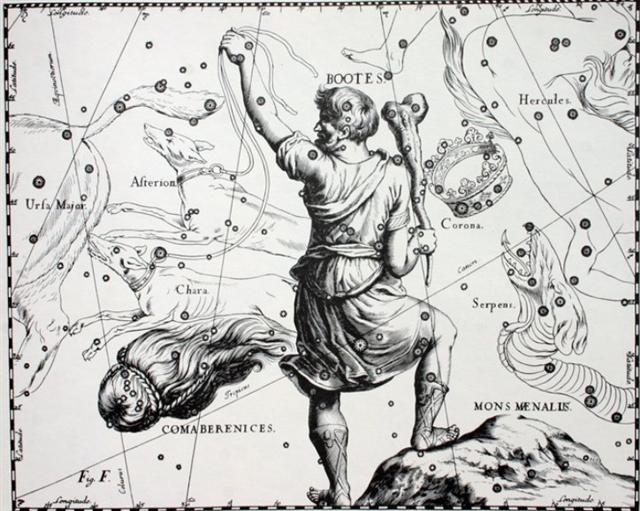
This indicates it in some way corresponded to for
instance Alnitak in
the center of Orion. As well as to Mirach in
Andromeda. The implication (according to the idiom of
images) is a place in the center between the upper part
and the lower part. In the C text, we have seen,
Arcturus was at glyph number 6 (→
Sun) on side b of the tablet and
Izar at glyph number 14 (Moon).
There were no feet (Apus) in the day after
Rijl al Awwa (the foot of the barker).
... In Bayer's Uranometria
from the year 1603 the Bird of Paradise is depicted
among the constellations in the southern sky. The name
Apus means 'without feet'. The great paradise birds of
East India have exceedingly beautiful feathers but very
ugly feet. When anciently the natives tried to sell
these birds to the Europeans they therefore first cut
off their feet ...
Possibly this indicated 'High Tide', i.e. that Land had
returned down into the Sea, and that feet for moving
about on the beaches were no longer 'needed'. Or that
the feet were no longer visible after having been
covered by water.
... During his descent the ancestor
still possessed the quality of a water spirit, and his
body, though preserving its human appearance, owing to
its being that of a regenerated man, was equipped with
four flexible limbs like serpents after the pattern of
the arms of the Great Nummo. The ground was rapidly
approaching. The ancestor was still standing, his arms
in front of him and the hammer and anvil hanging across
his limbs. The shock of his final impact on the earth
when he came to the end of the rainbow, scattered in a
cloud of dust the animals, vegetables and men disposed
on the steps. When calm was restored, the smith was
still on the roof, standing erect facing towards the
north, his tools still in the same position. But in the
shock of landing the hammer and the anvil had broken his
arms and legs at the level of elbows and knees, which he
did not have before. He thus acquired the joints proper
to the new human form, which was to spread over the
earth and to devote itself to toil ...
To the right (ahead in time-space according to the view
of Hevelius) the body of the Serpent ought to
have indicate the flexibility before joints were aquired
for working on land ↔ the flexibility after the bony
joints had been severed.
At the other side of the year (sky) compared to Bharani
was the First Point of Libra:
 |
 |
*241 |
 |
 |
|
Ba4-26 (150) |
Ba4-27 |
Ea2-13 (45) |
Ea2-14 |
|
Oct 31 (304
→
364 -
60) |
Nov 1 |
June 29 |
30 (181) |
|
ZUBEN ELGENUBI |
KOCHAB |
MEBSUTA |
SIRIUS (*101.2) |
|
May 1 |
2 |
Dec 29 |
30 (364) |
|
BHARANI (*41.4) |
GREAT MOUND |
DOUBLE DOUBLE |
Φ SAGITTARII (*284.0) |
|
*245 → 490 / 2 → 5 * 49 → 35 weeks → 290 / 2 +
100 |
|
May 2 |
3 (103 + 20) |
4 |
5 (125) |
 |
 |
 |
 |
|
Ea5-34 |
Ea5-35 (171) |
Ea5-36 |
Ea5-37 |
|
manu haati - kava |
manu - kava |
rere - te garu |
tagi mai te karaga - o te garu |
|
TA LING (Great
Mound) = τ Persei (42.4)
*1.0 = *42.4 - *41.4 |
ρ
Arietis (43.0),
GORGONEA SECUNDA =
π
Persei
(43.5),
ACAMAR (End of the River) =
θ
Eridani
(43.6),
ε
Arietis (43.7),
λ
Ceti (43.9)
DENEBOLA (β Leonis) |
MENKAR (The Nose) =
α
Ceti
(44.7) |
3h (45.7)
GORGONEA TERTIA =
ρ
Persei
(45.1),
ALGOL (The
Demon) =
β Persei
(45.9) |
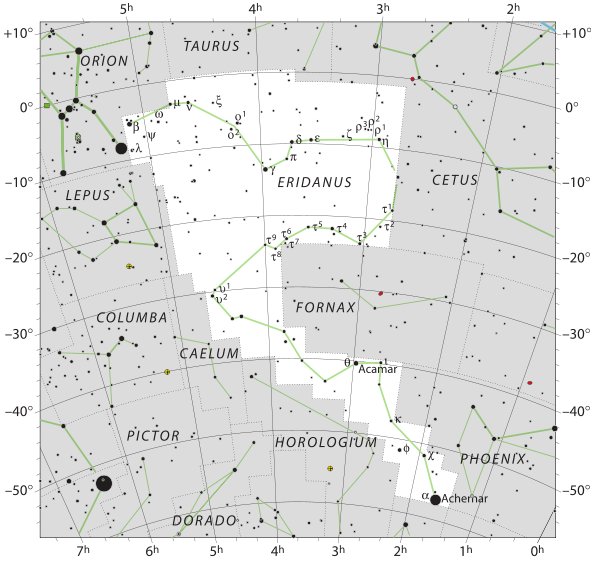 |
|
Oct 31 |
Nov 1 (Samhain) |
2 (306) |
3 |
|
ZUBEN ELGENUBI = α
Librae
(224.2), ξ Bootis, ο Lupi (224.5) |
KOCHAB (Kakkab,
Babylonian for Star) = β Ursae Min.
(225.0),
ξ Librae (225.7) |
KE KWAN (Cavalry Officer) =
β
Lupi
(226.3),
KE KWAN =
κ
Centauri (226.4),
ZUBEN ELAKRIBI (Claw of the Scorpion) =
δ
Librae
(226.8),
π¹
Oct.
(226.9)
*185.0 = *226.4 - *41.4 = "Sept 22 (265) =
equinox |
ω Bootis (227.2),
NEKKAR (Herdsman) = β Bootis
(227.3), σ Librae (227.5), π² Oct. (227.7),
NADLAT (Mean Little Ones) = ψ Bootis
(227.8), π Lupi (227.9)
*227 - *35 = *192 (MIMOSA) |
.jpg) |
When the Sun reached the ancient end of the Eridanus
river he was finished.
 |
 |
 |
|
haati |
manu haati - kava |
DENEBOLA |
|
May 6 |
7 |
8 (*48) |
9 |
10
(130) |
11 |
 |
 |
 |
 |
 |
 |
|
Ea5-38 |
Ea5-39 |
Ea5-40 |
Ea5-41 (177) |
Ea5-42 |
Ea6-1 |
|
tana haati mai - te garu |
te kotia |
o te garu |
kotia |
hokohuki - koia ra |
Kua oho mai kua hokokuki mai - kua moe |
|
Garu. Surfing.
Garuru, to feel dizzy, seasick; to
have a sudden headache: he garuru te
puoko. Vanaga. 1. To swim over the
waves (see aruaru 2). P Mgv.:
garu, foam, froth. Mq.: kaú,
naútai, wave, billow. Pau.:
puhi-garu, a bubble of water. In
aruaru 2 is found another galu
derivative. The sense of this garu
is nowhere else encountered; the stem
means simply the waves and involves no
idea of swimming. We note, however, the
Viti galo to swim; un uncertain
identification. 2. Garu hoa, a
friend of either sex. PS Sa.: galu,
an number of young persons (galu
teine, galu taulele'a). To.:
? gauta, many in number. Data
fail for the comparison. The plural
sense of the Samoan does not appear in
Rapanui. The Tongan form involves
the rather infrequent loss of an inner
l and leaves the latter element
ta unexplained. Garuru,
headache, vertigo; puoko garuru,
migraine. P Mgv.: garuru, nausea
that persists. Mq.: naúú, kaúú,
headache, migraine. Churchill. [E:32]
Papa. 1.
Underground rock; motionless; rocky sea
bottom; large flat stone; figuratively:
tagata papa important man, author
of great works. 2. Wooden plank
currently used much like a surf-board in
the sport called garu; it was
formerly called papa gaatu mo te
garu, because it was made from dry
totora leaves woven into the
shape of a plank. 3. To line up things
side by side on a flat surface, for
instance, to line up fish on top of a
flat stone. Vanaga. Shoulderblade.
Papapapa, a chill, to shiver, to
tremble, to shudder. Churchill.

Koti. Kotikoti.
To cut with scissors (since this is an
old word and scissors do not seem to
have existed, it must mean something of
the kind). Vanaga. Kotikoti. To
tear; kokoti, to cut, to chop, to
hew, to cleave, to assassinate, to
amputate, to scar, to notch, to carve,
to use a knife, to cut off, to lop, to
gash, to mow, to saw; kokotiga kore,
indivisible; kokotihaga, cutting,
gash furrow. P Pau.: koti, to
chop. Mgv.: kotikoti, to cut, to
cut into bands or slices; kokoti,
to cut, to saw; akakotikoti, a
ray, a streak, a stripe, to make bars.
Mq.: koti, oti, to cut, to
divide. Ta.: oóti, to cut, to
carve; otióti, to cut fine.
Churchill. Pau.: Koti, to gush,
to spout. Ta.: oti, to rebound,
to fall back. Kotika, cape,
headland. Ta.: otiá, boundary,
limit. Churchill.
Tia. (Tiha G) .To
sew. T Mgv.: tia, to prick, to
pierce, to stick in. Churchill. Ta.:
tia, the lower belly. Mq.:
tia-kopu, pubes. Ma.: tia,
the lower abdomen. Tiahonu, to
piece together. Mq.: tuhonu, to
mend, to patch. Ma.: tuhonu, to
join. Churchill. Mq.: tiaha,
drinking cup. Ha.: kiaha, a cup,
a mug. Tikao, to dig out, to
disembowel. Ma.: tikaro, to dig
out of a hole. Churchill. |
|
ι
Persei (46.1),
MISAM (Next to the Pleiades) =
κ
Persei
(46.2),
GORGONEA QUARTA =
ω
Persei
(46.7),
BOTEIN (Pair of Bellies) =
δ
Arietis
(46.9) |
ζ Arietis (47.7) |
ZIBAL (Young Ostriches) = ζ
Eridani (48.0),
κ
Ceti (48.9) |
τ Arietis (49.7) |
ALGENIB PERSEI = α Persei (50.0), ο Tauri (50.2), ξ Tauri (50.8)
GIENAH (γ Corvi) |
σ Persei (51.6) |
|
Nov 4 |
5 |
6 |
7 |
8 |
9 (313) |
|
15h (228.3)
ZUBEN HAKRABIM (Claw of the Scorpion) =
ν
Librae
(228.3),
λ
Lupi (228.9) |
ω
Oct. (229.3),
ι
Librae (229.6),
κ
Lupi (229.7),
ζ
Lupi (229.8) |
Al Zubānā-14b (Claws)
χ
Bootis (230.3),
PRINCEPS =
δ
Bootis
(230.6),
ZUBEN ELSCHEMALI (Northern Claw) =
β
Librae
(230.8) |
μ
Lupi,
γ
Tr. Austr.
(231.3), ο Librae (231.8) |
ο
Cor. Borealis (232.0),
δ
Lupi (232.1),
φ¹,
ν²
Lupi (232.2),
ν¹
Lupi (232.3),
ε
Lupi (232.4),
φ²
Lupi (232.5),
PHERKAD (The Dim One of the Two Calves)
=
γ
Ursae Min.
(232.6),
ε
Librae (232.7),
η
Cor. Borealis (232.8),
υ
Lupi (232.9)
*191.0 = *232.4 - 41.4 |
ALKALUROPS (The Herdsman's Lance) =
μ
Bootis
(233.1),
ED ASICH (Male Hyena) =
ι
Draconis
(233.2) |
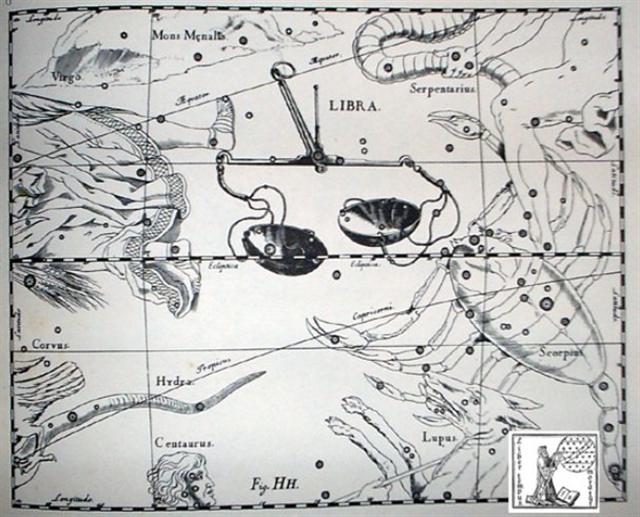 |

|






























.jpg)







